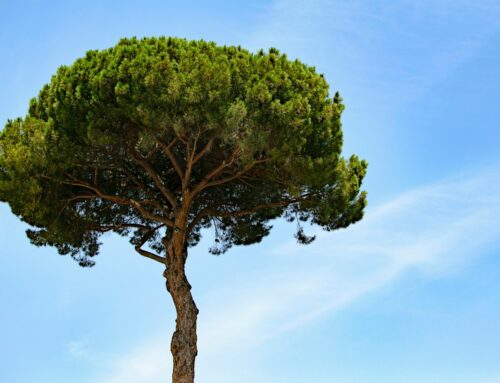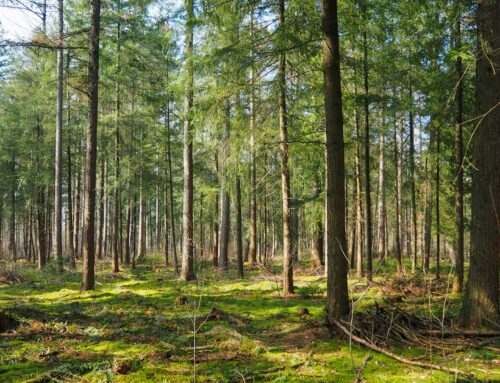The ecosystem is a complex network of interdependent organisms and their environment. It includes all living things, such as plants, animals, microorganisms, and their interactions with each other and their physical environment. Of course, this also includes trees, which are responsible for producing oxygen, providing habitat for other organisms, and helping to regulate the climate.
Trees play an essential role in the ecosystem because they are the primary producers of organic matter and provide food and shelter for many other species. Conversely, they also help improve air and water quality, prevent soil erosion, and reduce the risk of flooding, which is highly beneficial for humans because it prevents damage to infrastructure and property.
However, trees are more than this because there are certain bits of information about them that most people don’t know about. These include:
#1 – Trees Can Share Nutrients among Them
Most plants form a symbiotic relationship with mycorrhizal fungi, which live on their roots. The fungi partner with the tree, providing extra nutrients and moisture that the tree couldn’t access. Additionally, the fungi create an extensive network of connections between trees, which helps them communicate and protect each other and their offspring.
Trees have been around for a long while, so they only got gradual changes. The “memories” from different periods are stored in their DNA, then passed down to future generations. This allows trees to survive in different climates and preserve their memories for many years.
#2 – Trees Have Survival Instincts
Trees have extraordinary abilities to survive and thrive in their environment. They can produce chemicals to ward off pests and diseases and send airborne signals to alert other trees to prepare for the same threats. This makes other trees more resistant to the same pests and diseases.
Trees can also call for help when they are under attack. Certain trees, such as apple trees, are known to send out chemical signals that attract predators of the attacking pests, like birds that eat caterpillars, which is an effective defense mechanism for the trees.
#3 – Tree Roots Adapt to Survive in Hostile Environments
Tree roots usually grow in the first 18 inches of the soil. Even though they are close to the surface, they can still spread out and stretch quite far. If necessary, the roots can adapt to harsh conditions.
Because of their long lives, trees have evolved to develop unique roots that help them survive in different environments. These roots can provide extra stability to the tree, store food and water, and protect against storms. Some tree roots even adapt to survive in environments with very little water.
#4 – Trees Can Point You in the Right Direction in Forests
If you ever find yourself lost in the woods, there is a simple trick you can use to ensure you don’t stay lost for long. You don’t have to look for anything tall to climb to see which direction you should go; all you have to do is use the sun and shadows to help you find your way.
Moss grows in areas of a tree that receive the least sunlight. The north side of the tree is shaded in the northern hemisphere, and if you can’t find your way in the woods, look for the most moss. That side will indicate the north. The same applies to the opposite direction in the southern hemisphere.
If you come across a tree stump, you can tell the direction by examining the tree rings. In the northern hemisphere, the south side of the tree will be slightly wider due to receiving more sunlight. Conversely, the wider part of the tree ring will point north in the southern hemisphere.
#5 – The Oldest Known Tree Fossil Is around 380 Years Old
The Carboniferous period is when the oldest tree-like species were found as fossils. At that time, amphibians were the main creatures living on land. Examples of these early tree-like plants were lycophytes and tree ferns. The first true tree, Wattieza, is now extinct. This primitive tree type was believed to have had fronds instead of leaves and reproduced through spores.
In 2007, a fossilized tree was found in New York State researchers believed to be the Wattieza. Through carbon dating, it was determined that the fossil was approximately 385 million years old.
#6 – A Tree from the Jurassic Era Is Still around in Australia
Many animals and plants, including dinosaurs, became extinct during the Jurassic Period. One of the species of tree that went extinct was called Wollemia. Scientists knew about this tree from fossils, but they weren’t sure if any of them were still alive and growing. Then, in 1994, researchers were exploring a temperate rainforest in Australia’s Wollemia National Park, and they discovered a small group of Wollemia trees that had somehow survived.
Because of this, the Wollmia nobilis tree is now one of the oldest living species on earth, existing for about 200 million years. With only 80 mature trees remaining and 300 juveniles and seedlings, the International Union for Conservation of Nature classifies it as critically endangered. It is sometimes referred to as a living fossil, as no other species have existed for a long time.
Conclusion
Trees are vital for the ecosystem and humans because they yield many resources we use. For this reason, it’s our responsibility to ensure our lands are covered with trees so we can rely on them when needed. This way, the world can continue to benefit from the many advantages of trees.
JNP Tree Removal, LLC provides top-quality services for tree removal in Bridgeport, Connecticut. Our service professionals will ensure that trees you don’t want around your property are safely removed for an affordable price. Call us today at (475) 319-4806 to request a free quote!




